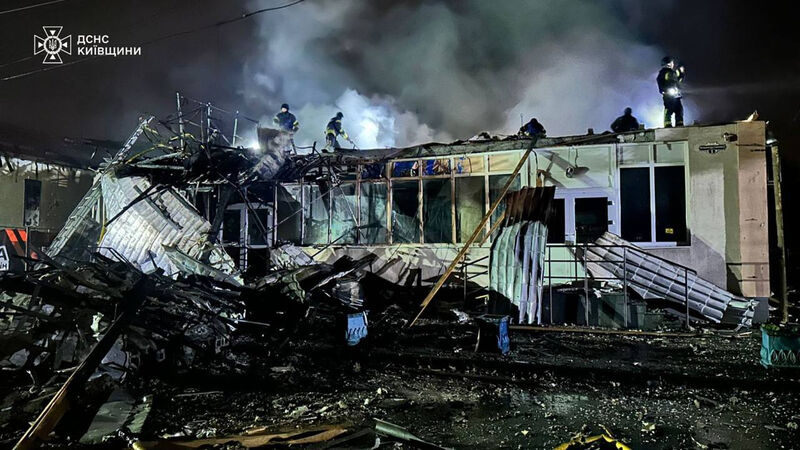Irish Examiner view: Maintaining our humanity in the era of smartphone wars

Emergency services personnel work to extinguish a fire following a Russian attack in Brovary, near Kyiv, Ukraine, on Friday. Picture: Ukrainian Emergency Service via AP
Try from €1.50 / week
SUBSCRIBEIt is often proclaimed that Vietnam was the first ‘television war’, and that the impact of scenes of carnage and mass destruction broadcast daily into the homes of peace-loving people around the world — and in particular the living rooms of American citizens worried about their boys — would render future conflicts unsustainable.
In part, this was due to an astonishing rate of growth in the ownership of television sets. The number of US households which possessed a TV at the start of the Korean War in 1950 was 9%. By the mid 1960s, it was 93%.
Already a subscriber? Sign in
You have reached your article limit.
Annual €130 €80
Best value
Monthly €12€6 / month
Introductory offers for new customers. Annual billed once for first year. Renews at €130. Monthly initial discount (first 3 months) billed monthly, then €12 a month. Ts&Cs apply.
CONNECT WITH US TODAY
Be the first to know the latest news and updates
Newsletter
Sign up to the best reads of the week from irishexaminer.com selected just for you.
Newsletter
Keep up with stories of the day with our lunchtime news wrap and important breaking news alerts.
Newsletter
Sign up to the best reads of the week from irishexaminer.com selected just for you.
Sunday, December 7, 2025 - 10:00 AM
Sunday, December 7, 2025 - 7:00 AM
Saturday, December 6, 2025 - 10:00 PM
© Examiner Echo Group Limited